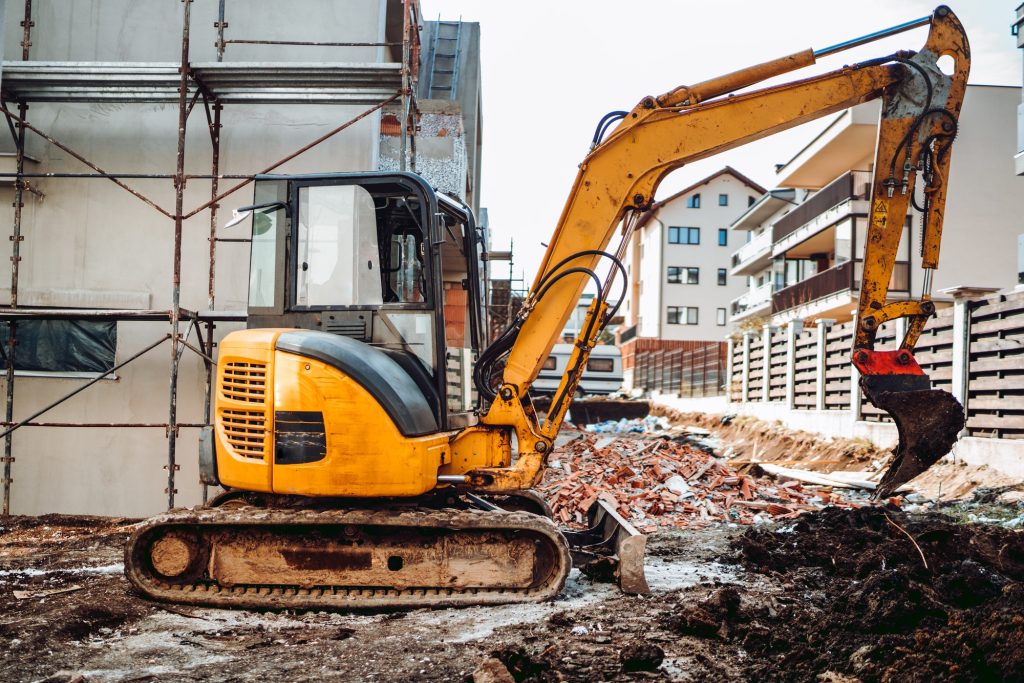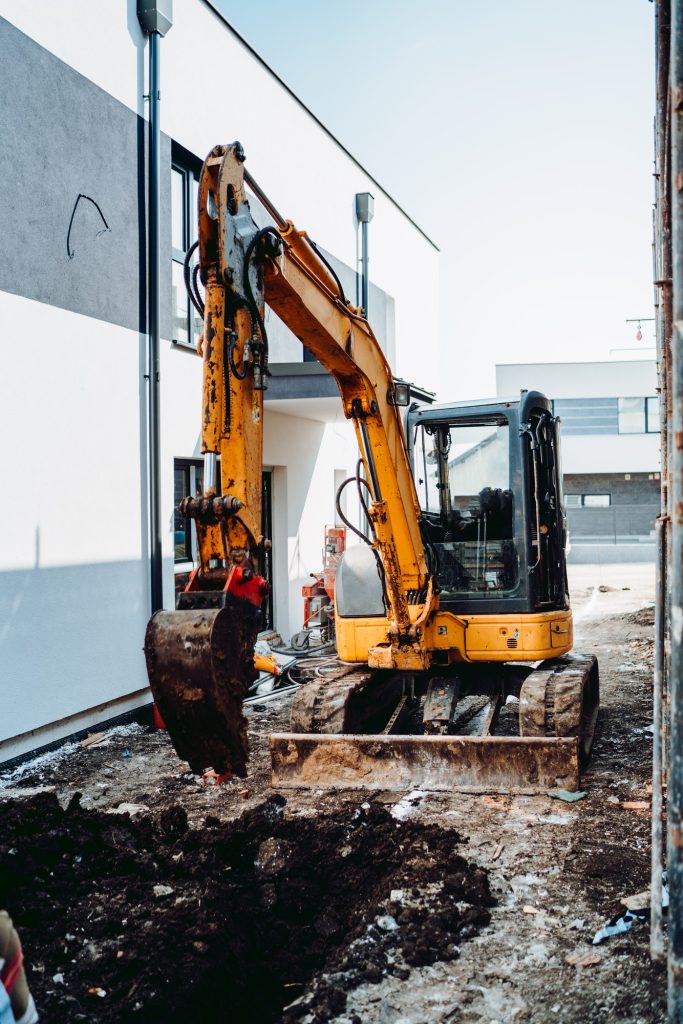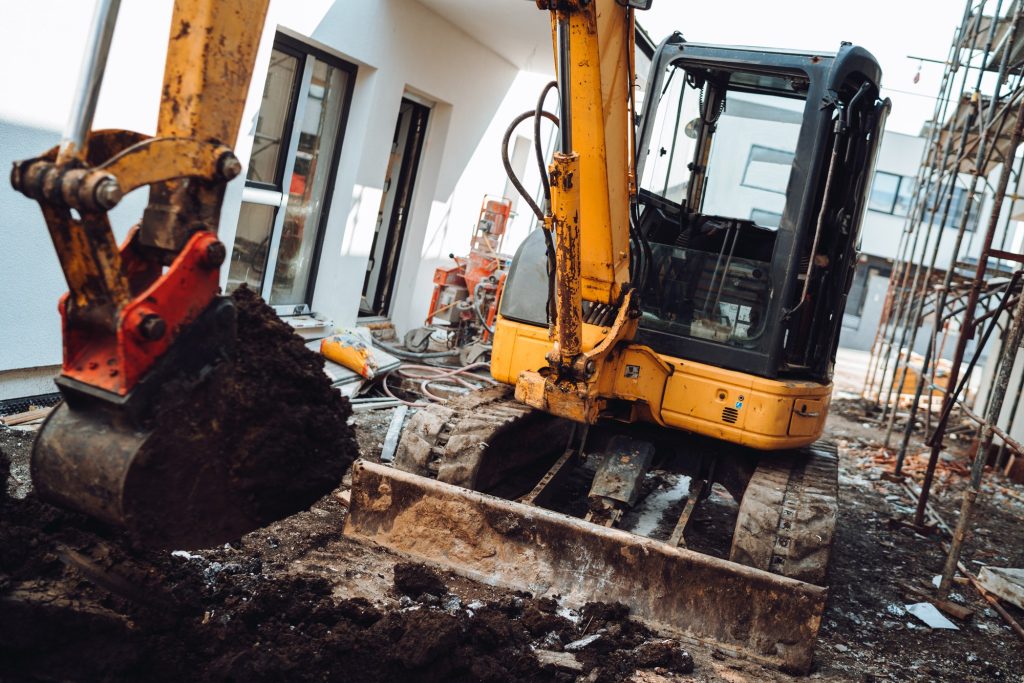How to Load a Mini Excavator For Shipping
Freedom Heavy Haul can offer expedited Pickup and Delivery for any size shipment anywhere in the USA. Contact us today for No Hassle, No Pressure Pricing.
Transporting a mini excavator requires careful planning and execution to ensure safety and compliance with legal requirements. In this article, you will learn about how to load a mini excavator for shipping.

Evaluating Load Capacities and Limitations
Before any transportation process begins, it’s crucial to assess the load capacities and limitations of both the mini excavator and the transport vehicle. This evaluation involves understanding the weight and dimensions of the excavator and ensuring that the transport vehicle and trailer can handle this load. Overlooking this step can lead to unsafe transport conditions or even legal violations due to overloading.
Preparing Your Mini Excavator for Load
Preparation is a key component of successful and safe transportation. This phase involves several crucial steps to ensure that the mini excavator is ready for transport.
Assessing and Preparing the Mini Excavator for Transport
The mini excavator should be thoroughly inspected before loading. This includes checking for any loose parts, securing attachments, and ensuring that the excavator is in a safe, transportable state. Fluid levels should be checked, and any leaks should be addressed to prevent spillage during transport.
Checking Weather and Road Conditions
Weather and road conditions can significantly impact the transport of heavy machinery. It’s important to check the weather forecast and plan the route accordingly, avoiding roads that might be unsuitable for heavy transport or have height restrictions that could affect the loaded excavator.
How to Load a Mini Excavator: Step-by-Step Guide
Loading a mini excavator onto a trailer requires precision and safety precautions to prevent accidents.

Methods for Loading a Mini Excavator into a Van
When loading into a van, use ramps that can safely bear the weight of the excavator. The excavator should be driven slowly up the ramps, and it’s important to ensure that the vehicle is stable and level during loading.
Techniques for Mounting a Mini Excavator onto a Trailer
Loading onto a trailer typically involves similar steps but may require additional considerations depending on the trailer type. Ensure the trailer is properly hitched to the transport vehicle and that the ramps are securely attached.
Using Ramps and Lifts for Efficient Loading
Ramps must be of adequate strength and size. For heavier mini excavators, a lift system might be required to safely load the excavator onto the transport vehicle.
Effective Securing Techniques for Mini Excavators
Once the mini excavator is loaded onto the trailer, securing it properly becomes a critical step for ensuring safe transportation. This process involves more than just fastening the excavator; it requires a meticulous approach to ensure that the machine is stabilized and immobilized during transit.
Choosing the Right Tie-Downs and Straps
Use heavy-duty straps and chains to secure the excavator. The number and type of tie-downs should comply with transportation regulations, usually based on the weight and size of the load.
Securing Attachments and Loose Parts
All attachments and loose parts of the excavator should be secured or removed if necessary. This prevents any movement that could cause damage or become a safety hazard during transport.
Selecting the Appropriate Vehicle and Trailer for Transportation
Choosing the right vehicle and trailer is as important as the loading process itself.

Understanding the Importance of Choosing the Right Transport Vehicle
The transport vehicle must have the capacity to handle the weight of the mini excavator and the trailer. This selection is critical to maintain safety and legal compliance on the road.
Safe Loading Practices for Mini Excavator Transportation
Adhering to safe loading practices involves understanding the balance and distribution of weight on the trailer. The excavator should be positioned to maintain a stable center of gravity.
Navigating Legal and Safety Regulations for Excavator Transport
Transporting a mini excavator involves adhering to a range of legal and safety regulations, which are crucial to ensure the secure and lawful transit of such heavy equipment. These regulations often vary depending on the region and the specific roads used for transportation. They typically cover aspects such as the maximum allowable weight and dimensions of the load, including height and width restrictions.
Understanding Permits and Transportation Laws
It’s crucial to be aware of the transportation laws and permits required for hauling heavy machinery. These regulations can vary by state or region.
Ensuring Compliance with Weight and Height Restrictions
Compliance with weight and height restrictions is essential to avoid fines and ensure safety. Overloaded or improperly secured loads can lead to serious road hazards.
Post-Loading Inspection and Safety Checks
After the mini excavator is loaded onto the trailer and secured, conducting a thorough post-loading inspection and safety check is imperative. This crucial step involves meticulously inspecting every aspect of the loading and securing process to ensure that the excavator is properly stabilized and that all tie-downs, chains, and other securing devices are correctly and safely applied.
Conducting a Final Walk-Around Inspection
Perform a final walk-around inspection to check the security of the load, the condition of the tie-downs, and the overall stability of the loaded vehicle.
Verifying Securement and Load Stability
This step ensures that everything is properly secured and the load is stable. This includes checking that the weight is evenly distributed and the center of gravity is low.
Tips for Long-Distance Transport of Mini Excavators
Long-distance transport of a mini excavator requires additional planning and considerations.
Planning Your Route and Stops
Plan your route carefully, considering rest stops, fuel stops, and any potential road challenges like low bridges or weight-restricted roads.
Managing Fuel and Breaks Efficiently
Efficient management of fuel and breaks is important, especially for long-distance travel. Plan your fuel stops and take regular breaks to check the load and rest.
Unloading Your Mini Excavator: Procedures and Precautions
Upon reaching the destination, unloading the mini excavator safely is just as important as loading it.
Safe Unloading Techniques
Use the same level of caution and precision for unloading as you did for loading. Ensure the unloading area is clear and stable.
Post-Transport Equipment Checks
After unloading, conduct a thorough inspection of the mini excavator for any potential damage during transport. Check all functions to ensure it’s operational.
Maintenance and Care Post-Transport
After transport, proper maintenance and care of the mini excavator are crucial.
Inspecting the Mini Excavator for Any Transport Damage
Inspect the excavator for any damages incurred during transport. This includes checking for any loose parts, leaks, or other signs of wear.
Recommended Post-Transport Maintenance Procedures
Perform regular maintenance procedures, such as checking fluid levels, cleaning, and lubricating moving parts to ensure the longevity and performance of the mini excavator.
Emergency Procedures and Contingency Planning
Having a contingency plan in place for emergencies is essential, especially when transporting heavy equipment like mini excavators. This plan should encompass a comprehensive set of procedures to address various potential emergency scenarios that might occur during transportation.
Handling Breakdowns and Delays During Transport
Be prepared to handle any unexpected breakdowns or delays. Have a list of emergency contacts and know the locations of service stations along your route.
Emergency Contact and Support Resources
Keep a list of emergency contacts, including towing services, mechanics, and other support resources, readily available during the transportation of the mini excavator.







